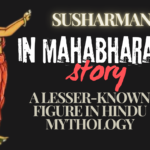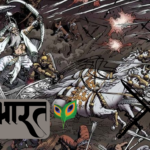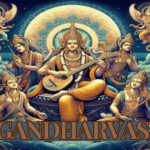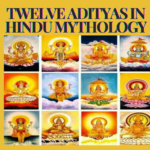The Concept of Desire in the Ramayana.
Desire in the Ramayana is a powerful force that propels the plot forward. It manifests in various forms, from the noble to the destructive, and highlights the motivations behind the actions of key characters.
Ravana’s Unrestrained Lust.
Ravana, the antagonist of the Ramayana, embodies unrestrained desire. His obsession with Sita, driven by lust and a sense of entitlement, leads to his ultimate downfall. Ravana’s abduction of Sita is a pivotal moment in the epic, setting off a chain of events that culminate in a fierce battle. His unchecked desires not only bring about his demise but also serve as a cautionary tale about the dangers of uncontrolled ambition and passion.
Rama’s Dharma-Driven Desires.
In stark contrast to Ravana, Rama’s desires are aligned with dharma, or righteousness. As the paragon of virtue, Rama’s commitment to upholding his promise and maintaining moral integrity, even at great personal cost, highlights the power of restraint. His willingness to accept a 14-year exile to honor his father’s word exemplifies his dedication to higher principles and the greater good.
Sita’s Desire for Love and Loyalty.
Sita’s unwavering love and loyalty towards Rama represent a pure and noble form of desire. Her trials, including her abduction and subsequent ordeal, underscore her resilience and virtue. Sita’s steadfastness in the face of adversity exemplifies the strength of her character and her deep emotional commitment.
Lakshmana’s Protective Desire.
Lakshmana, Rama’s devoted brother, demonstrates a protective desire that underscores his loyalty. His decision to accompany Rama and Sita into exile, and his unwavering support throughout their journey, highlights the depth of his devotion. Lakshmana’s protective instincts are a testament to the power of familial bonds and the lengths one will go to safeguard loved ones.
Bharata’s Selfless Desire.
Bharata’s reaction to Rama’s exile showcases a selfless desire for justice and righteousness. Despite being the beneficiary of Kaikeyi’s machinations, Bharata refuses to take the throne and instead, yearns for Rama’s return. His actions underscore the themes of loyalty and the rejection of ill-gotten gains, reflecting the moral fabric of the epic.
Kaikeyi’s Ambition.
Kaikeyi’s desire for her son Bharata’s success illustrates how ambition can lead to negative consequences. Her manipulation to secure the throne for Bharata, driven by personal ambition, results in familial strife and regret. Kaikeyi’s actions serve as a reminder of how unchecked ambition can disrupt harmony and bring about unintended suffering.
Hanuman’s Devotion.
Hanuman, the devoted servant of Rama, embodies a desire to serve with unwavering dedication. His adventures, marked by immense loyalty and bravery, highlight the power of selfless devotion. Hanuman’s actions, driven by his desire to aid Rama, play a crucial role in the epic’s narrative and underscore the virtues of loyalty and service.
The Role of Restraint.
Restraint is a recurring theme in the Ramayana, often depicted as a virtue that characters must uphold to achieve their goals and maintain harmony. The epic shows that while desire can be a powerful motivator, it must be balanced with restraint to prevent chaos and destruction.
Contrast Between Desire and Restraint.
The Ramayana presents a delicate balance between desire and restraint. Characters who exemplify restraint, such as Rama and Sita, often achieve higher moral and ethical standards, while those driven by unchecked desire, like Ravana and Kaikeyi, face dire consequences. This contrast highlights the importance of self-control and the pursuit of righteous desires.
Lessons from the Ramayana.
The Ramayana imparts numerous moral and ethical lessons through its depiction of desire and restraint. It teaches the importance of aligning desires with higher principles, the dangers of unchecked ambition, and the virtues of loyalty, devotion, and self-control. These lessons are timeless and offer valuable insights applicable to modern life.
Conclusion
Desire and restraint are central themes in the Ramayana, shaping the destinies of its characters and driving the narrative. By exploring these concepts, the epic provides profound insights into human nature and the moral complexities of life. The Ramayana’s timeless wisdom continues to inspire and guide readers, emphasizing the importance of balancing desire with restraint to achieve true fulfillment and harmony.
FAQs
What is the main theme of the Ramayana?
The Ramayana explores themes of duty, righteousness, loyalty, and the complex interplay between desire and restraint.
How does the Ramayana depict desire?
Desire in the Ramayana is depicted as a powerful force that can drive both noble actions and destructive outcomes, depending on how it is controlled and directed.
What lessons can be learned from Ravana’s downfall?
Ravana’s downfall teaches the dangers of unchecked ambition and desire, highlighting the importance of self-control and moral integrity.
How does Rama exemplify dharma?
Rama exemplifies dharma through his unwavering commitment to righteousness, his adherence to promises, and his dedication to the greater good, even at personal cost.
What is the significance of Sita’s trials?
Sita’s trials underscore her virtue, resilience, and unwavering loyalty, highlighting the strength of her character and the power of pure, devoted love.





